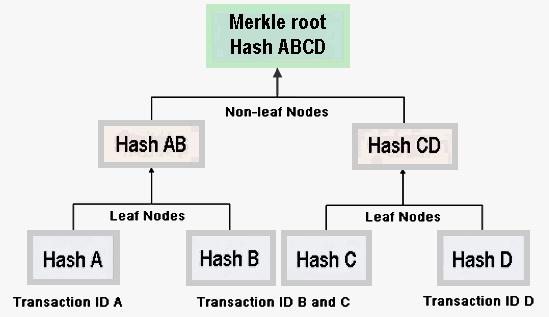Accredited InvestorsAltcoinAnatoli UnitskyAnti-Money Laundering (AML) In CryptoAPIArbitrageArtCoin TokenArticle DirectoryASICAuction Terminology GlossaryBasics of Stock Market InvestingBear MarketBest Crypto Payment Provider In the WorldBitcoinBlockchainBlockchain ConfirmationBlockchain Consensus MechanismBlockchain ForkBlockchain GlossaryBored Ape Yacht ClubBuild a Business That OutperformsBull MarketBuying SkyWay SharesByzantine Fault Tolerance (BFT) ExplainedCasascius CoinCentral Bank Digital Currency (CBDC)Centralized Crypto ExchangeCoinCoinsetCold WalletCollateralCommodity Futures Trading Commission (CFTC)Cross-Chain TechnologyCRUCrypto ExchangeCrypto GlossaryCrypto JokesCrypto Terms to KnowCrypto TickerCryptocurrencyCryptographyCryptojackingCryptounit BlockchainCryptounit GlossaryCryptounit ProgramdApp (Decentralized Application)Dead CoinDecentralized Exchange (DEX)Decentralized Finance (DeFi)Difference Between Bitcoin and EthereumDifferent Ways of Investing MoneyDigital CurrencyDistributed LedgerDo Your Own Research (DYOR)Dollar Cost Averaging (DCA)Dow Jones Industrial Average (DJIA)EncryptionERC-20ERC-721EthereumEvoScentFear Of Missing Out (FOMO)Fear, Uncertainty and Doubt (FUD)Fiat MoneyFNT Fintech CompanyGenesis BlockGlobal Unit PayGlossary of Banking TermsGlossary of Business TermsGlossary of Financial TermsHalvingHODLHot WalletHow Do I Start InvestingHow Rich is Satoshi Nakamoto?How to Create a BlockchainHow to Find Private InvestorsHow to Get Into FintechHow to Program Smart ContractsI Am Thrilled to Be a Part of This Global ProjectInitial Coin Offering (ICO)Initial Public Offering (IPO)Initial Token Offering (ITO)Innovation Basalt TechnologyInnovative Transportation TechnologiesInternational Bank Account Number (IBAN)Investing in Gold Mining StocksInvesting in Gold MiningJagerJoy of Missing Out (JOMO)Know Your Customer (KYC)LedgerLiquidity in CryptocurrencyMaker and Taker Fees in Crypto TradingMarket Capitalization (Market Cap)Meme CoinMetal Credit CardMetaMaskMillenials Now Have Access to Generational WealthMy Best Investment EverNew Digital EvolutionNFT GlossaryOff-Chain TransactionsOn-Chain TransactionsOpen Edition NFTPeer-to-Peer (P2P)Personal Loan GlossaryProbably the Best STO on the MarketProof of Stake (PoS)Real Estate Glossary of TermsReal Estate Investing GlossaryRebase TokenSecurities and Exchange Commission (SEC)Security Token ExchangesSecurity Token Offering (STO)Soulbound Decentralized Identities for Security TokensSoulbound ID Launch by Stobox Proves a SuccessSoulbound TokensStoboxStock Market GlossaryTestimonialsTether Platform and Token (USDT)UnitEx ExchangeUnitsky String TechnologiesUNTBUSDUValidatorWe Started Investing When We Were 25What are Blue Chip NFT?What are Blue Chip Stocks?What are Crypto Assets?What are Crypto Smart Contracts?What are CryptoPunks NFT?What are Digital Assets?What are Digital Collectibles?What are Gas Fees?What are Gas Wars?What are Hashmasks?What are Non Fungible Tokens?What are Non-Sufficient Funds (NSF)?What are Soulbound Tokens (SBT)?What are Stablecoins in Crypto?What are Transactions Per Second (TPS)?What are Utility NFTs?What are Utility Tokens?What Does Burning Crypto Mean?What Does Diamond Hands Mean?What Does Paper Hands Mean?What Does To The Moon Mean?What Does WAGMI Mean?What Happened to Satoshi Nakamoto?What is a 51% Attack?What is a Baby Boomer?What is a Backlink?What is a Banner?What is a Barcode?What is a Bid-Ask Spread in Crypto?What is a Block in Blockchain?What is a Block Reward?What is a Blockchain Address?What is a Blockchain Node?What is a Blockchain Oracle?What is a Blog?What is a Bond?What is a Bot?What is a Broker?What is a Business Accelerator?What is a Cash Cow?What is a Commercial Bank?What is a Commodity?What is a Con?What is a Credit?What is a Credit Limit?What is a Credit Rating?What is a Crypto Airdrop?What is a Crypto Bridge?What is a Crypto Scam?What is a Crypto Token?What is a Crypto Wallet?What is a Crypto Whale?What is a Crypto Winter?What is a Cryptocurrency Public Ledger?What is a Cryptocurrency Roadmap?What is a DAO?What is a Dark Pool?What is a Day Trader?What is a Dead Cat Bounce?What is a Default?What is a Derivative?What is a Digital Credit Card?What is a Fiscal Quarter?What is a Fungible Token?What is a Governance Token?What is a Grace Period?What is a Hard Fork?What is a Hot Wallet?What is a Hybrid Blockchain?What is a Hybrid PoW/PoS?What is a Joint Account?What is a Market Cap?What is a Merkle Tree in Blockchain?What is a Mining Farm?What is a Nonce? What is a PFP NFT?What is a POS System?What is a Prepaid Card?What is a Private Blockchain?What is a Private Key?What is a Public Blockchain?What is a Public Key?What is a Reserve Currency?What is a Ring Signature?What is a Routing Number?What is a Rug Pull in Crypto?What is a Safe Deposit Box?What is a Satoshi?What is a Security Token?What is a Seed Phrase?What is a Shitcoin?What is a Sidechain?What is a Soft Fork?What is a Spot Market?What is a State Bank?What is a SWIFT Code?What is a Tax Identification Number (TIN)?What is a Time Deposit?What is a Transaction Account?What is a Variable Interest Rate?What is a Virtual Assistant (VA)?What is a Virtual Card?What is a Virtual Currency?What is a Visa Card?What is a Whitelist in Crypto?What is a Whitepaper?What is Accounts Payable (AP)?What is AMA in Crypto?What is Amortization?What is an Accrual?What is an ACH Transfer?What is an Actuary?What is an Addendum?What is an Algorithm?What is an Angel Investor?What is an Annuity?What is an Asset?What is an ATM?What is an Atomic Swap?What is an Audit?What is an Avatar?What is an EIN?What is an Embargo?What is an Entrepreneur?What is an IDO (Initial Dex Offering)?What is an Interest Rate?What is an Internet cookie?What is an Investment Bank?What is an NFT Drop?What is an NFT Floor Price?What is an Ommer Block?What is an Orphan Block?What is an Outstanding Check?What is an Overdraft?What is Artificial Intelligence (AI)?What is B2B (Business-to-Business)?What is B2G (Business-to-Government)?What is Bartering?What is Bitcoin Dominance?What is Bitcoin Pizza Day?What is Blockchain Immutability?What is Blockchain Used For?What is BRICS?What is Business-to-Consumer (B2C)?What is C2C (Customer to Customer)?What is Capitalism?What is Catfishing?What is CFD Trading?What is Check Kiting?What is Cloud Mining?What is Communism?What is Content Marketing?What is Decentralization in Blockchain?What is DeFi in Crypto?What is Delisting?What is Depreciation?What is Digital Marketing?What is Diversification?What is Double Spending?What is Dumb Money?What is Dumping?What is Earnings Per Share (EPS)?What is Economics?What is Email Marketing?What is Equity?What is Etherscan?What is Fintech?What is Foreign currency?What is Forex?What is Fundamental Analysis (FA)?What is GameFi?What is Generative Art NFT?What is Gwei?What is Hard Currency?What is Hash Rate?What is Hashing in Blockchain?What is Inflation?What is Initial Game Offering (IGO)?What is Interest?What is Interest Income?What is Mainnet?What is Mastercard?What is Metaverse in Crypto?What is Mining in Cryptocurrency?What is Minting NFT?What is Mobile Banking?What is Money Laundering?What is NFT Alpha?What is NFT Metadata?What is NFT Rarity?What is NGMI Meaning?What is Nominal Interest Rate?What is Online Banking?What is Open-End Credit?What is OpenSea NFT Marketplace?What is Personal Identification Number (PIN)?What is Play-to-Earn?What is Polygon?What is Proof of Authority (PoA)?What is Proof of Work (PoW)?What is Public Key Cryptography?What is Pump and Dump?What is Quantum Computing?What is Refinancing?What is Retail Banking?What is Ripple?What is Sharding?What is Slippage in Crypto?What is Smart Money?What is Solvency?What is Soulbound ID?What is SSL?What is Staking in Cryptocurrency?What is Technical Analysis (TA)?What is Testnet?What is the Ask Price?What is the Better Business Bureau (BBB)?What is the Bid Price?What is the Dark Web?What is the InterPlanetary File System (IPFS)?What is the Gold Standard?What is the Lightning Network?What is the Prime Rate?What is the Sandbox?What is the Secondary Market?What is the World Bank?What is Tier 1 Capital?What is Tokenomics?What is TRC-20?What is Universal Banking?What is Unspent Transaction Output (UTXO)?What is Usury?What is Volatility in Crypto?What is Wash Trading?What is Web3?What is Whisper?What is XRP?What is Zero-Knowledge Proof (ZKP)?Who is Beeple?Who is Satoshi Nakamoto?Who is Vitalik Buterin?Why Tokenization is a Safe HavenWhy You Should Try Your Hand at Trading
What is a Merkle Tree in Blockchain?
- Home
- Blockchain Glossary
- What is a Merkle Tree in Blockchain?
Blockchain technology relies on various cryptographic techniques to ensure the security and integrity of its data. One such technique is the Merkle tree, also known as a hash tree.

What is a Merkle Tree?
A Merkle tree is a hierarchical data structure in which each node is a cryptographic hash of its child nodes. It is named after its inventor, Ralph Merkle, who first described the concept in 1979. Merkle trees are also sometimes called the binary hash trees because they are binary trees where each non-leaf node has exactly two children.
The purpose of a Merkle tree is to provide a tamper-evident way of representing a large amount of data. By aggregating data into a tree structure, it becomes possible to verify the authenticity of a particular piece of data quickly. Rather than verifying the entire dataset, it is only necessary to verify the branches of the tree that lead to the specific data item.
How Does a Merkle Tree Work?
To understand how a Merkle tree works, it's helpful to think of it as a set of transactions in a blockchain. Each transaction is represented by a leaf node in the tree. To create the tree, the leaves are hashed in pairs, and the resulting hashes are then hashed again in pairs until a single root hash is produced.
The root hash is the most critical element of the Merkle tree. It represents the entire set of transactions and can be used to verify the authenticity of any transaction in the tree. To do this, a verifier would request the hashes of the branches leading to the transaction of interest. By hashing these hashes together in a specific order, they can recreate the root hash and confirm that the transaction is valid.
Merkle Tree Structure
The Merkle tree has a tree-like structure that consists of binary nodes. The bottom row of nodes contains the hashes of transactional data, which are referred to as "Leaf Nodes." The intermediate nodes are called "Non-Leaf Nodes," while the hash at the top of the tree is known as the "Root." While most Merkle trees are binary (meaning each node has two child nodes), they can also have more child nodes.
In a Merkle tree, transactions are grouped into pairs and hashed together. The resulting hash is stored in the parent node directly above the paired nodes. These parent nodes are also grouped into pairs and hashed together, and the resulting hash is stored on the next level up. This process continues until the root of the Merkle tree is reached. This tree-like structure allows for efficient verification of individual transactions, as well as the overall integrity of the entire dataset.

Let's examine each type of node in a Merkle tree:
Leaf Nodes - The Leaf Nodes in a Merkle tree are the hashes of each cryptocurrency transaction in a block. They are also known as transaction IDs. These transaction hashes can be viewed when searching for a specific transaction on a block explorer.
Non-Leaf Nodes - Above the Leaf Nodes, a layer of Non-Leaf Nodes is created by hashing the Leaf Nodes together in pairs. These nodes are referred to as Non-Leaf Nodes because they do not contain transaction IDs or hashes, but rather store the hash of the two Leaf Nodes that they represent. As the tree narrows while ascending, each layer of Non-Leaf Nodes is also hashed together in pairs, resulting in half as many nodes per layer. The final Non-Leaf Node layer contains only two nodes, which combine to create the Merkle root.
Merkle Root - The Merkle root, also known as the root hash, is the hash of all transactions in a block combined into a single hash and stored in the block header. The Merkle root can be used to verify the authenticity and integrity of the Leaf Nodes (transaction IDs/hashes) at the base of the Merkle tree. When used in cryptocurrencies, the Merkle root ensures that data blocks remain unchanged, undamaged, and complete.
Why are Merkle Trees Essential to the Blockchain Ecosystem?
Merkle trees play a crucial role in the security and efficiency of blockchain technology. They allow for rapid verification of data, making it possible to confirm the authenticity of transactions quickly. By reducing the amount of data that needs to be verified, Merkle trees also reduce the computational load required to maintain the blockchain.
Furthermore, Merkle trees make it more difficult to tamper with the data in a blockchain. Any attempt to alter a transaction in the tree would result in a change to the corresponding leaf node's hash, which would cause changes to all the hashes further up the branch. This tamper-evident property makes it possible to detect and reject any attempts to modify the data.
The Bottom Line
A Merkle tree is a hierarchical data structure that plays a crucial role in the security and efficiency of blockchain technology. By aggregating data into a tree structure and hashing it in pairs, it becomes possible to quickly verify the authenticity of individual transactions. This reduces the computational load required to maintain the blockchain and makes it more difficult to tamper with the data. As such, Merkle trees are an essential component of the blockchain ecosystem.
Related Articles

What is a Block in Blockchain?
The transaction element is the largest, followed by the block header, which comprises sub-elements such as the version of the cryptocurrency being used, the hash of the previous block's header, the hash of transactions in the Merkle tree of the current...

Blockchain
Blockchain transactions take place on a peer-to-peer network of geographically dispersed computers (nodes). Each node keeps a copy of...

What is Hashing in Blockchain?
When a transaction is added to a blockchain, it is first verified by a network of computers known as nodes. Once the nodes have...
- Home
- Blockchain Glossary
- What is a Merkle Tree in Blockchain?